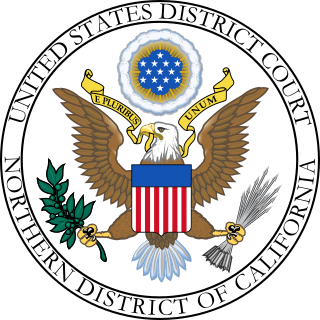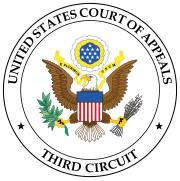
The idea–expression distinction or idea–expression dichotomy is a legal doctrine in the United States that limits the scope of copyright protection by differentiating an idea from the expression or manifestation of that idea.

Apple Computer, Inc. v. Microsoft Corporation, 35 F.3d 1435, was a copyright infringement lawsuit in which Apple Computer, Inc. sought to prevent Microsoft and Hewlett-Packard from using visual graphical user interface (GUI) elements that were similar to those in Apple's Lisa and Macintosh operating systems. The court ruled that, "Apple cannot get patent-like protection for the idea of a graphical user interface, or the idea of a desktop metaphor [under copyright law]...". In the midst of the Apple v. Microsoft lawsuit, Xerox also sued Apple alleging that Mac's GUI was heavily based on Xerox's. The district court dismissed Xerox's claims without addressing whether Apple's GUI infringed Xerox's. Apple lost all claims in the Microsoft suit except for the ruling that the trash can icon and folder icons from Hewlett-Packard's NewWave windows application were infringing. The lawsuit was filed in 1988 and lasted four years; the decision was affirmed on appeal in 1994, and Apple's appeal to the U.S. Supreme Court was denied.
Software copyright is the application of copyright in law to machine-readable software. While many of the legal principles and policy debates concerning software copyright have close parallels in other domains of copyright law, there are a number of distinctive issues that arise with software. This article primarily focuses on topics particular to software.
A scène à faire is a scene in a book or film which is almost obligatory for a book or film in that genre. In the U.S. it also refers to a principle in copyright law in which certain elements of a creative work are held to be not protected when they are mandated by or customary to the genre.

Computer Associates International, Inc. v. Altai, Inc., 982 F.2d 693 is a decision from the United States Court of Appeals for the Second Circuit that addressed to what extent non-literal elements of software are protected by copyright law. The court used and recommended a three-step process called the Abstraction-Filtration-Comparison test. The case was an appeal from the United States District Court for the Eastern District of New York in which the district court found that defendant Altai's OSCAR 3.4 computer program had infringed plaintiff Computer Associates' copyrighted computer program entitled CA-SCHEDULER. The district court also found that Altai's OSCAR 3.5 program was not substantially similar to a portion of CA-SCHEDULER 7.0 called SYSTEM ADAPTER, and thus denied relief as to OSCAR 3.5. Finally, the district court concluded that Computer Associates' state law trade secret misappropriation claim against Altai was preempted by the federal Copyright Act. The appeal was heard by Judges Frank Altimari, John Daniel Mahoney, and John M. Walker, Jr. The majority opinion was written by Judge Walker. Judge Altimari concurred in part and dissented in part. The Second Circuit affirmed the district court's ruling as to copyright infringement, but vacated and remanded its holding on trade secret preemption.

Substantial similarity, in US copyright law, is the standard used to determine whether a defendant has infringed the reproduction right of a copyright. The standard arises out of the recognition that the exclusive right to make copies of a work would be meaningless if copyright infringement were limited to making only exact and complete reproductions of a work. Many courts also use "substantial similarity" in place of "probative" or "striking similarity" to describe the level of similarity necessary to prove that copying has occurred. A number of tests have been devised by courts to determine substantial similarity. They may rely on expert or lay observation or both and may subjectively judge the feel of a work or critically analyze its elements.

Sega Enterprises Ltd. v. Accolade, Inc., 977 F.2d 1510, is a case in which the United States Court of Appeals for the Ninth Circuit applied American intellectual property law to the reverse engineering of computer software. Stemming from the publishing of several Sega Genesis games by video game publisher Accolade, which had disassembled Genesis software in order to publish games without being licensed by Sega, the case involved several overlapping issues, including the scope of copyright, permissible uses for trademarks, and the scope of the fair use doctrine for computer code.

Data East USA, Inc. v. Epyx, Inc. 862 F.2d 204, 9 U.S.P.Q.2d (BNA) 1322 was a court case between two video game manufacturers, where Data East claimed that their copyright in Karate Champ was infringed by World Karate Championship, a game created by Epyx. Data East released Karate Champ in arcades in 1984, and the game became a best-seller and pioneered the fighting game genre. The next year, Epyx published World Karate Championship for home computers, which sold 1.5 million copies. Data East sued Epyx, alleging that the game infringed on their copyright and trademark.

The Abstraction-Filtration-Comparison test (AFC) is a method of identifying substantial similarity for the purposes of applying copyright law. In particular, the AFC test is used to determine whether non-literal elements of a computer program have been copied by comparing the protectable elements of two programs. The AFC test was developed by the United States Court of Appeals for the Second Circuit in 1992 in its opinion for Computer Associates Int. Inc. v. Altai Inc. It has been widely adopted by United States courts and recognized by courts outside the United States as well.

Adobe Systems, Inc. v. Southern Software, Inc. was a case in the United States District Court for the Northern District of California regarding the copyrightability of digitized typefaces. The case is notable since typeface designs in general are not protected under United States copyright law, as determined in Eltra Corp. v. Ringer. Since that case, the United States Copyright Office has published policy decisions acknowledging the registration of computer programs that generate typefaces. In this case, the court held that Adobe's Utopia font was protectable under copyright and Southern Software, Inc.'s Veracity font was substantially similar and infringing.
Copyright protection is limited to the certain subject matter in Canada. Generally, every original literary, dramatic, musical, and artistic work is protected under copyright law. Ideas and facts are not copyrightable, subject to a few exceptions.

Structure, sequence and organization (SSO) is a term used in the United States to define a basis for comparing one software work to another in order to determine if copying has occurred that infringes on copyright, even when the second work is not a literal copy of the first. The term was introduced in the case of Whelan v. Jaslow in 1986. The method of comparing the SSO of two software products has since evolved in attempts to avoid the extremes of over-protection and under-protection, both of which are considered to discourage innovation. More recently, the concept has been used in Oracle America, Inc. v. Google, Inc.
Google LLC v. Oracle America, Inc., 593 U.S. ___ (2021), was a U.S. Supreme Court decision related to the nature of computer code and copyright law. The dispute centered on the use of parts of the Java programming language's application programming interfaces (APIs) and about 11,000 lines of source code, which are owned by Oracle, within early versions of the Android operating system by Google. Google has since transitioned Android to a copyright-unburdened engine without the source code, and has admitted to using the APIs but claimed this was within fair use.

Broderbund Software Inc. v. Unison World, Inc., 648 F. Supp. 1127, 1133, was a United States District Court for the Northern District of California software case, initially important in determining how U.S. copyright law applied to the look and feel presented by a software product. It took an expansive position which later courts increasingly rejected.

Roth Greeting Cards v. United Card Co., 429 F.2d 1106, was a Ninth Circuit case involving the copyright of greeting cards that introduced the "total concept and feel" standard for determining substantial similarity. Courts used this test in later cases such as Reyher v. Children's Television Workshop (1976).
Delrina Corporation v. Triolet Systems Inc, 2002 CanLII 11389, 58 OR (3d) 339, also known as Delrina II, is a 2002 Ontario Court of Appeal case which established the existence of the merger doctrine in Canadian copyright law. The plaintiff, Delrina Corp., sued Triolet Systems Inc. and Brian Duncombe for infringing its copyright of the computer program Sysview by designing similar software, called Assess. The plaintiffs were awarded an interlocutory injunction but ultimately lost at trial. Delrina Corp.’s appeal to the Ontario Court of Appeal was dismissed.
Navitaire Inc v Easyjet Airline Co. and BulletProof Technologies, Inc., is a decision by the England and Wales High Court of Justice. The case involved a copyright infringement claim brought by Navitaire Inc. ("Navitaire") against EasyJet Airline Company ("EasyJet") and Bulletproof Technologies, Inc. ("Bulletproof") with regards to software used to construct an airline booking system. Curiously, it was not claimed that Defendant had access to the original source code or that Defendant's source code resembled Plaintiff's in any way.
The protection of intellectual property (IP) of video games through copyright, patents, and trademarks, shares similar issues with the copyrightability of software as a relatively new area of IP law. The video game industry itself is built on the nature of reusing game concepts from prior games to create new gameplay styles but bounded by illegally direct cloning of existing games, and has made defining intellectual property protections difficult since it is not a fixed medium.

Tetris Holding, LLC v. Xio Interactive, Inc., 863 F.Supp.2d 394, was a 2012 American legal case related to copyright of video games, confirming that a game's look and feel can be protected under copyright law. Tetris Holding is a company that holds the copyright to the original Tetris game from 1985 and licenses those rights to game developers. Xio Interactive is a game developer that released Mino in 2009, a mobile game based on the gameplay of Tetris. Mino was downloaded millions of times, and Tetris Holding filed a DMCA notice and eventually a lawsuit against Xio for copyright infringement.

Atari, Inc. v. North American Philips Consumer Electronics Corp., 672 F.2d 607, is one of the first legal cases applying copyright law to video games, barring sales of the game K.C. Munchkin! for its similarities to Pac-Man. Atari had licensed the commercially successful arcade game Pac-Man from Namco and Midway, to produce a version for their Atari 2600 console. Around the same time, Philips created Munchkin as a similar maze-chase game, leading Atari to sue them for copyright infringement.






